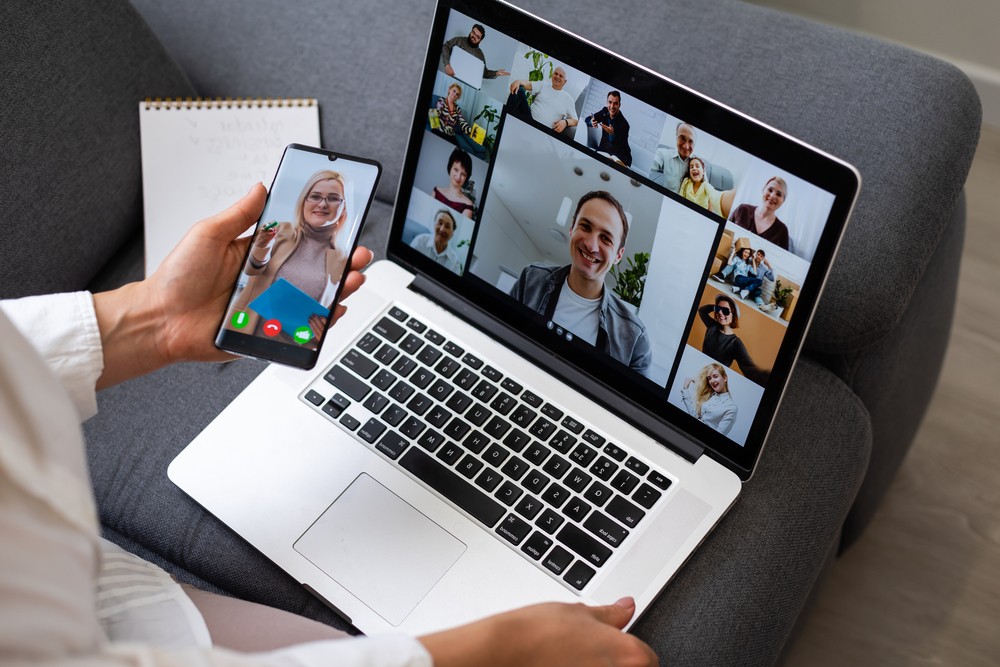The global pandemic has forced a permanent change in the nature of work, which has made collaborating with digital technologies ubiquitous for workers, whether in-person, remote or hybrid. However, many companies still experience challenges with their digital collaboration tools, and they need to put a priority on making collaboration smoother, more useful, more interactive and less confusing to enable higher levels of productivity and efficiency.
According to a global report sponsored by Lucid Software, a leading provider of visual collaboration software, more than half of respondents describe digital collaboration as useful, but rarely “engaging,” “impactful” or “crucial,” which indicates that the technology used now is far from helping teams reach their full potential. The report highlights the challenges for managing today’s distributed workforce and offers insights into how organizations can adapt and address the needs of differing collaboration styles.
“The global pandemic has caused two years of uncertainty on how the return to office will shape up, including how the mix of remote, in-person and hybrid workers will impact the workplace. This ongoing uncertainty is forcing organizations to carefully consider how well digital collaboration is working for their employees,” said Nathan Rawlins, CMO of Lucid Software. “Amidst the uncertainty, workers have adapted. Our data shows that while there is positive momentum around digital collaboration, there are also challenges and different collaboration styles among the respondents. As the workplace continues to evolve, companies will benefit greatly from addressing the needs of these workstyles.”
Digital Collaboration Momentum
The report reveals that workers have become more comfortable with virtual meetings, with 90% expecting it to be the norm for the foreseeable future. Furthermore, 87% have become comfortable with digital collaboration since the pandemic started. Respondents also recognize the essential role digital collaboration now plays in teamwork and team culture: 80% say that collaborating virtually with their team is imperative to effectively do their job, and 79% say that their company uses virtual meetings to collaborate cross-functionally.
The ubiquity of collaboration tools for the hybrid workplace has also increased communication and participation from workers who might otherwise not contribute. Among respondents, 67% report that in virtual meetings they see people sharing ideas who wouldn’t normally speak up, and 78% say that the chat function improves their ability to participate.
Challenges and Emerging Collaboration Styles
While workers are adapting to this hyper-digital workplace, there are still shortcomings to the current state of collaboration:
65% cite at least one problem with current digital collaboration technologies and want them to be more user-friendly.
72% admit to multitasking while in a virtual meeting.
45% say the lack of a clear direction or agenda is a challenge.
47% wish for better ways to keep track of key points and action items during meetings.
The research also discovered that about half of workers have preferred collaboration styles — and that businesses need better processes and solutions to empower a diverse range of styles.
Expressive: These workers yearn for more engaging, visual ways of collaboration, such as interactive charts, drawings and graphics. For example, they are more likely than their peers to say that the use of reactions, GIFs and emojis help them express themselves while collaborating with their team virtually (69% vs. 58%).
Introspective: These workers tend to be more naturally introverted and gravitate toward a more thoughtful, deliberate approach to collaboration. For example, they are more likely to say virtual meetings are mostly people talking and sharing vs. getting things done (65% vs. 59%).
Relational: These workers thrive through meaningful, human connections with co-workers and prefer technology that enables direct, human-to-human teamwork. For example, they are more likely to say collaborating during virtual meetings drains their energy because they are not as engaged (56% vs. 44%).
Although features such as GIFs, emojis and chat can boost self-expression, they are still limited — 56% of those surveyed say that virtual meetings are dominated by the loudest, most active voices. Nearly as many (53%) think meetings often fail to capture everyone’s perspective due to too many people being involved. These workers will require help reaching their full potential in what will be the Next Normal — a transformation of the workplace to a more fluid, hybrid environment, where digital solutions are the catalyst to creativity and collaboration. Managers should be mindful of how they engage each collaboration style during work sessions to ensure they are being flexible and meeting every team member's needs.
Collaboration in the Next Normal
As workers look to the future, they recognize opportunities for technology to address the challenges they have experienced with collaboration. Two-thirds (66%) of respondents suggest additional improvements for optimizing digital collaboration, like providing better meeting facilitation features to integrating other apps or software.
Remote work is here to stay, so businesses need to adapt and implement new features to bridge the collaboration gap for hybrid and distributed workforces. Success in the Next Normal will be dependent on finding ways to advance digital collaboration to support all employees’ needs and drive new levels of productivity and innovation.




